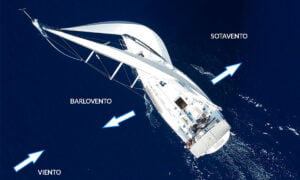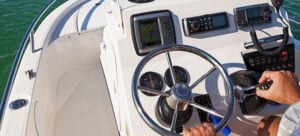When sailing a boat, countless factors must be taken into consideration. Navigate through shallow waters, known as shallows, can cause different problems in navigation and even cause the boat to become stranded or suffer damage to the hull or keel. Throughout this article we are going to explain to you What are shallow waters and precautions for navigating these waters.
Shallow waters: Definition
Shallow waters are those that are shallow, which poses a danger to navigation. The International Hydrographic Organization (the body that regulates all hydrographic activity) considers shallow waters to be those that do not exceed 30 meters. Shallow waters are characterized by being waters whose depth is such that surface waves are notably affected by the topography of the bottom..
They are considered shallow waters, a term that comes from the English translation shallow waters, those in which the depth is less than half the length of the surface wave.
At this depth, The shape of the seabed is decisive in the propagation of waves. In shallow waters, the orbital speeds of the waves are practically horizontal and the wave propagation speed is independent of the frequency and only varies with depth, reaching lower values than in deep waters.

Shallow water characteristics
The Permanent Commission for the Investigation of Maritime Accidents and Incidents (CIAIM), attached to the Ministry of Public Works, prepared a report that includes those phenomena related to shallow waters and which, consequently, can lead to the unmanageability of the vessel:
- Squat or overload: Due to the reduction in the flow of fluid in shallow waters, the hydrodynamic pressure increases and, in turn, the resistance to advance and, consequently, the draft of the vessel increases. All of this results in a slowdown in its response, in addition to the vibrations caused by turbulence.
- Wave reflection: At the bottom or close to the coast, it causes cross waves.
- wave refraction: Related to the angle formed from the depth gauges, it gradually modifies the direction of propagation, aligning itself with the isobaths. In this way, the heights and slopes of the waves increase in the shallows and protrusions of the coast and decrease in the inlets, bays and coastal bays.
- The assimilation: With the variation in the height and wavelength of the waves in shallow areas, their slope is slightly reduced at intermediate depths, which increases sharply in the shallow water area.
- The breakers: They are caused by the decrease in the forward speed of the waves and the increase in their slope.
- The Doppler Effect: It takes place due to the interaction of waves with ocean currents. As a consequence, the wavelength is reduced if the direction of propagation of the currents and the wave front are opposite and vice versa if they are similar. This variation in wavelength results in an increase or decrease in the slope of the waves and is particularly adverse in shallow areas with high tide levels.
- The formation of currents of a certain intensity: Associated with breaking waves and, where appropriate, the presence of tidal currents, they will cause more dangerous navigation.
Are you interested in: Nautical needle
Tips for sailing shallow waters
Navigation in shallow waters can be dangerous for navigation safety. and, above all, when bad weather prevails, since it can even lead to the loss of the boat with the consequent danger for the crew, therefore we must avoid sailing in shallow waters, especially if they are unknown.
If due to force majeure we have to navigate through them, we will take into account the following considerations:
- Always consult before going sailing. meteorological and maritime information.
- Maintain at all times a surveillance of our navigation area.
- Respect the markings provided.
- Connect the probe and pay the most attention to it.
- Place yourself on the card more often to check the possible deviation from the planned course.
- In narrow channels or river mouths take the currents into account.
- Make consistent decisions avoiding unnecessary risks.
Now that you know what shallow waters are, you are closer to Obtain the title of Recreational Boat Skipper (PER). At Anclademia we help you prepare for the theoretical exam and, in addition, you will be able to carry out the approved practical hours necessary to obtain this card. Do you want to start?





